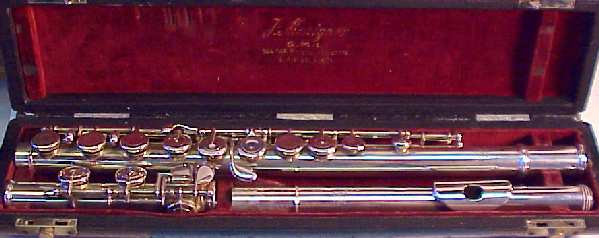

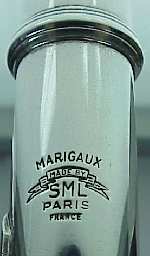 |
Marigaux
|
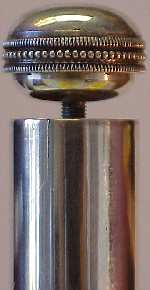 |
 |
The pad cups are quite shallow,
deserving of
thinner pads than those currently fitted. 
|
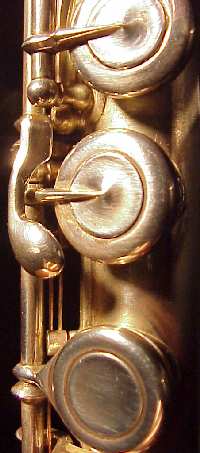 |
There are numerous hallmarks
scattered
throughout the keywork. On the shaft of the thumb
key at right
you can see the bear-shaped "boar's head" imprint used by
the Paris
assay office from 1838 to 1961.
The maker's logo is <SML> inside a diamond with # under the M. It appears on the Bb shake as well as the thumb key. |
 |

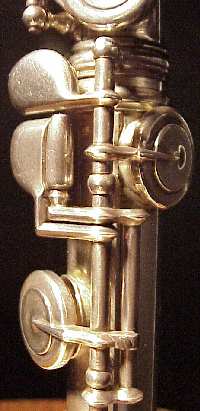 There is one
lonely
adjustment screw on the flute. In the image of the foot on
the
left you can see the screw to adjust closure of the C# when the
C
roller is depressed. Why only one adjuster? You got
me
there.
There is one
lonely
adjustment screw on the flute. In the image of the foot on
the
left you can see the screw to adjust closure of the C# when the
C
roller is depressed. Why only one adjuster? You got
me
there.
Craftsmanship is very good throughout, right down to the way the back connector is nicely finished with a touch of élan. This made me believe this flute was probably made using resources acquired following the acquisition of the Louis Lot firm. Not for the first time, I was mistaken (see additional information below).
One interesting bit of provenance. In preparing the flute for shipment to me, the former owner left the flute on a cloth on his work table while his grandchildren played on the far side of the table. One child pulled the cloth, imparting a roll to the flute which carried it off the edge of the table. As it fell, one end bounced off an upholstered chair seat, imparting considerable angular momentum to the flute, which landed crown-first on the floor. The thinwall body wound up with a pronounced banana shape. After the keywork was removed, the body straightened beautifully. The box (or barrel), however, still has a slight tilt which allows the headjoint to list towards the player. It doesn't affect performance, and is only noticeable when sighting down the instrument. We'll just say this French flute has attitude and a jaunty personality....
SML went on to make a line of (mostly plated?) flutes at about this time with the Louis Lot imprint. I believe they probably continued with the SML serial number series simply for their own convenience, thinking it would be far more pretentious and confusing to switch to the Louis Lot sequence. Don't assume this was done to mislead anyone into believing he was purchasing a desirable rarity. Remember, in France in the early 50's vintage flutes were in every pawn shop, and SML was in the business of selling people nice shiny new flutes to replace their worn out old antiques :-)